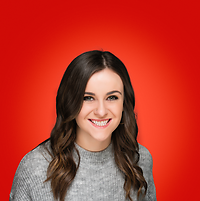September 20, 2023
 by Laura Grass / September 20, 2023
by Laura Grass / September 20, 2023

You already know that you advertise to those who aren’t ready to buy. But you probably didn’t know that the Ehrenberg-Bass Institute says that up to 95% of people or firms are not in the market for many goods and services at any one time. So the big question is: how do you make your Account-Based Marketing (ABM) more effective, so you can more easily find and engage those 5% who are?
Good buyer intent data and a great ABM strategy help tackle this challenge.
So here, we discuss activating effective ABM that finds the 5% of in-market buyers and how the right set of marketing solutions can power your company’s strategy. With that, let’s dig into how great buyer intent data leads to more effective account-based marketing by reviewing:
Keep in mind, the ABM strategy is nearly two decades old now.
Account-based marketing is a business-to-business (B2B) sales an marketing strategy that targets high-value accounts with highly targeted, personalized campaigns.
Pioneered by ITSMA around 2003, the strategy started to grow during the marketing technology revolution that started in that decade.
As the popularity of marketing technologies took hold, the second phase of ABM got underway. In the mid-part of the 2010s, ABM solutions entered the market. Along with them, arose an ecosystem of new solutions-- including both data and software— aimed at making account-based marketing and sales more effective.
Thus, by now, as a strategy and practice, ABM is well-established, as many B2B software and technology companies pursue it. In fact, in 2023 alone, about 70% of B2B companies say they invest in ABM.
We’re now entering the third wave of development of the ABM data and technology ecosystem.
In this third wave, ABM becomes simpler to implement, and within reach for even small marketing and sales teams. At any resource level and at any pace your B2B marketing and sales team chooses to go, implementing an ABM strategy can be relatively fast, easy, and actionable.
All it takes is commitment, thorough planning, and great data and solutions partners.
Before you jump into looking at data and solutions partners, take the time to complete your marketing planning.
The data and tools you buy are resource decisions, so it’s important to first lay some groundwork:
Once you’ve gotten this far, your next planning steps include multi-channel campaign tactics for engaging with targeted accounts and tiers.
This will be very familiar to the experienced demand gen or growth marketers, and it’s the usual:
The key difference, though, is how you incorporate buying signals from buyer intent data. This important data source, by the way, is a key element to making account-based marketing as effective as it can be.
This, of course, takes us to our next topic – buyer intent data.
Every time a prospect:
It generates machine data that is known as an “intent signal” or “buying signal.”
The more someone interacts with your site or searches your product category somewhere on the web, and the more this happens throughout an organization, the more likely it is that an account is “in-market.”
Putting it all together, buying signal strength is determined by:
Taken in sum, they accurately identify a targeted account as in-market, within that elusive and magical 5% you’re seeking to engage.
So as volume and type of search increase, we assume a stronger need to buy. And when people search different competitors, while concurrently looking at you, those intent signals from that account become even stronger.
To classify accounts, proprietary AI-driven models use intent data to make inferences as to buying journey stage – awareness, consideration, and decision.
Obviously, the more time an account spends searching and researching product options, the closer the account is to purchase.
Why?
The answer is deceptively simple: Review sites are organized by named product categories. Because of this, in addition to a statistical relationship, there’s a strong logical relationship between activity and intent.
There’s no guessing as to whether an organization is shopping. Else, why would an account spend so much precious time on a review site? Unlike publications or analyst reports, nobody reads them for professional development or learning.
Buying intent signals derived from much broader web search data do not have - and can never have - that strong logical relationship because people do web searches for so many reasons.
On review sites, and particularly the largest ones with extensive products, and huge communities of shoppers, speed, volume, type, and frequency of which a searching group of shoppers consume content types across the funnel, uniquely indicate purchase stage and urgency.
Because active buyers interact with different areas within product categories and product profiles depending on their goals, the intent algorithm determines the buying stage.
Then what’s the bottom line?
Review sites generate buying signals from the top to the bottom of the funnel, so you get the most accurate buyer intent data for the most effective account-based marketing.
Since it’s a data flow, and ABM is all about speed, you can easily get started by simply using the buyer intent data vendor’s native console. You can view identified target accounts there, as they arrive. Alternatively, you can download a CSV file to import into marketing infrastructure.
Additionally, you can relatively quickly use existing integrations to operationalize buyer intent data into marketing and sales infrastructure. Within minutes, buyer intent data can flow into nearly any ad platform, as well as marketing and sales technology your teams use every day.
For example, you can directly integrate buyer intent data flows of target accounts to:
The key thing to remember is that your buyer intent data vendor for ABM campaigns should be flexible enough to work into existing marketing and sales infrastructure. If you use a data lake or customer data platform to centralize all customer data, you should simply show the path, and your buyer intent data partner should show you how to get it there.
What exactly do we mean by accurate buyer intent data without the complexity?
We’re talking about effective ABM with buyer intent data that:
The most effective ABM includes using buyer intent data where there’s a clear and strong logical relationship between a target account’s web activity and being in-market. It must be robust enough to detect the 5% who are truly in-market.
B2B technology and software review sites deliver that strong relationship. After all, why else would someone spend a few hours researching product categories, reading product profiles, and digging deep into user reviews?
Thus, using buyer intent data from a software and technology review site:
Contrast that with other sources of buyer intent data. Second-party buyer intent from publications and third-party data from web searches are filled with ambiguity.
The risk is a misspent advertising budget. And of course, such inefficient ad spend undermines the value of buyer intent data, and dampens any return on investment,
And for sales teams, the right ABM solution with review site-sourced buyer intent data can help them to consistently meet or beat sales quotas.
The key, though, is to use buyer intent data that reveals the lowest funnel prospects at the time they’re truly in the market. This way, as soon as target accounts show interest, salespeople can quickly respond with the right message at the right time – using time and resources most efficiently.
G2 Marketing Solutions and its buyer intent data is the fast path to achieve easy and actionable ABM – with a fast speed-to-lead at a low Cost per Lead (CPL) - because it truly measures accurate intent.
Only G2 can deliver buyer intent data derived from the search and research behaviors of real accounts -- companies that spend time learning from more than 2 Million software, services, and technology product reviews. Annually, G2 sees over 80 Million visitors who are conducting research within defined product categories every year, which covers over 2,000 technology and software products.
This means no ambiguity. No guessing intent.
There’s no wasted time and no wasted third-party marketing spend. Only more leads and revenue from targeted ABM accounts.
Get help crafting effective ABM strategies and understanding solutions here.
Want even more? Download G2’s Official Guide to Easy & Actionable Account-Based Marketing here and start driving faster speed-to-lead conversions at lower costs.
Laura is a revenue marketer who has successfully driven tens of millions of dollars in acquisition, expansion, and renewal pipeline using ABX methodologies and intent data.
Account-based marketing (ABM) has become a cornerstone of B2B marketing, revolutionizing how...
 by Sagar Joshi
by Sagar Joshi
Would you rather be addressed as “Hey there” or by your name?
 by Claire Brenner
by Claire Brenner
Starting an account-based marketing program from scratch can sound intimidating. The good news...
 by Joel Garcia
by Joel Garcia
Account-based marketing (ABM) has become a cornerstone of B2B marketing, revolutionizing how...
 by Sagar Joshi
by Sagar Joshi
Would you rather be addressed as “Hey there” or by your name?
 by Claire Brenner
by Claire Brenner


